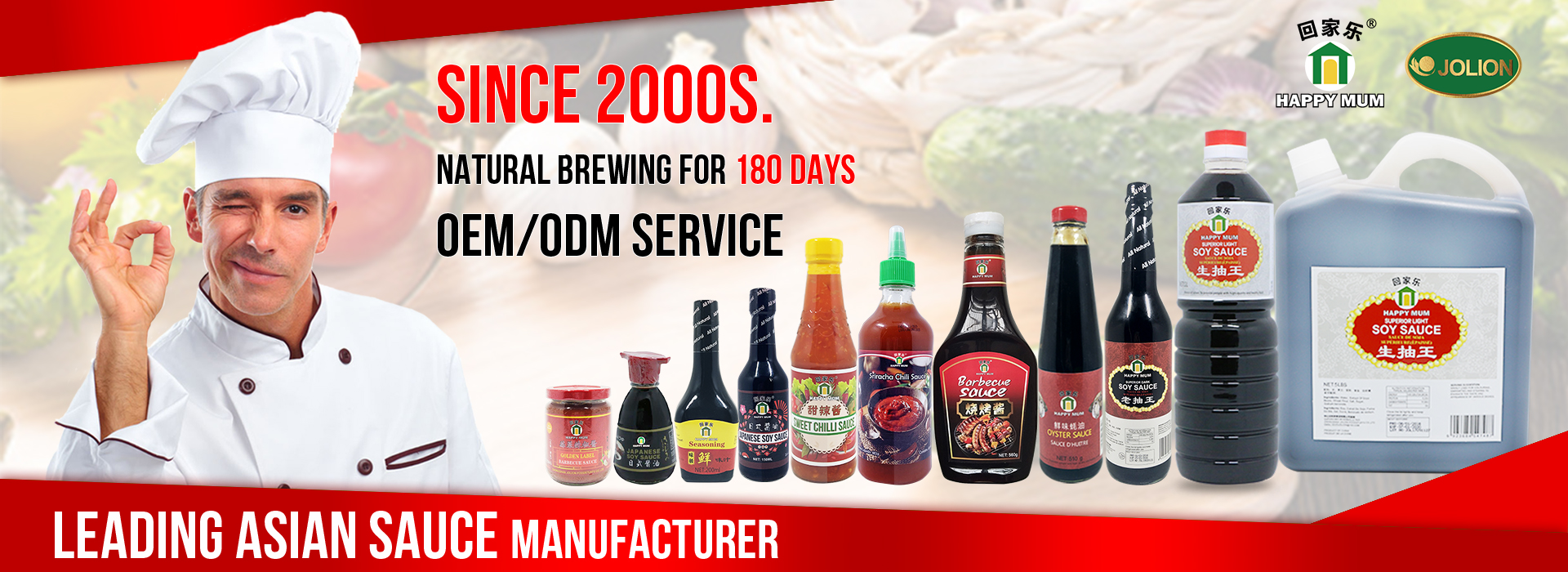
- Discovering Chilli Oil Beef Noodles: A Culinary Delight2025-11-20Chilli oil beef noodles are a beloved dish that combines the rich flavors of tender beef, aromatic spices, and the unique kick of chilli oil.
- Understanding the Caloric Content of Chilli Oil2025-11-19Chilli oil is a popular condiment made by infusing oil with chilli peppers and sometimes other ingredients like garlic or spices.
- Discovering Chilli Oil with Garlic: A Versatile Culinary Delight2025-11-18Chilli oil with garlic is a flavorful condiment that combines the heat of chilli peppers with the aromatic essence of garlic.
How to make Balsamic Vinegar
Balsamic vinegar is a versatile and flavorful condiment that can elevate any dish with its rich and tangy taste. While store-bought options are readily available, there is something truly special about creating your own balsamic vinegar right in the comfort of your kitchen. In this article, we will explore the art of making balsamic vinegar, delving into the process and ingredients needed to achieve that distinctive taste that sets JOLION Food balsamic vinegar apart.
1. Grape Harvesting and Selection
- Grapes: Use high-quality grapes, typically Trebbiano or Lambrusco varieties, which are traditional for balsamic vinegar.
- Harvesting: Grapes are harvested when they are fully ripe to ensure maximum sugar content and flavor.
- Selection: Only the best grapes are selected for the production of balsamic vinegar.
2. Crushing and Cooking the Must
- Crushing: The grapes are crushed to extract the juice, including the skins, seeds, and stems. This mixture is called "must."
- Cooking: The must is transferred to large copper or stainless steel pots and heated to a high temperature (around 90-100°C). The must is cooked slowly over several hours to reduce its volume by about half. This concentration process caramelizes the sugars and develops the characteristic flavors.
3. Cooling and Fermentation
- Cooling: The cooked must is cooled to room temperature.
- Fermentation: The cooled must is transferred to large wooden barrels or stainless steel tanks. Yeast is added to initiate the alcoholic fermentation, converting the sugars into alcohol. This process can take several weeks to a few months.
- Acetic Fermentation: After the alcoholic fermentation, acetic bacteria are introduced to convert the alcohol into acetic acid, turning the liquid into vinegar. This step can also take several weeks to a few months.
4. Aging and Blending
- Aging: The vinegar is aged in a series of progressively smaller wooden barrels made from different types of wood, such as oak, chestnut, and cherry. Each barrel imparts unique flavors and aromas to the vinegar. The aging process can last from a few months to several years, depending on the desired quality and flavor profile.
- Blending: Different batches of vinegar are blended to achieve a consistent flavor and quality. This step is crucial for maintaining the standard of the final product.
5. Filtration and Pasteurization
- Filtration: The aged vinegar is filtered to remove any sediment and impurities. This ensures a clear and smooth product.
- Pasteurization: The vinegar is pasteurized to kill any remaining bacteria and stabilize the product. This step is important for shelf life and safety.
6. Bottling and Labeling
- Bottling: The filtered and pasteurized vinegar is bottled in clean, sterile bottles. The bottles are filled using automated bottling machines to ensure consistency and hygiene.
- Labeling: Each bottle is labeled with the brand name, batch number, expiration date, and other necessary information. Labels may also include certifications and quality marks.
7. Quality Control
- Testing: Regular quality control tests are conducted to ensure the vinegar meets the required standards. This includes testing for pH, acidity, sugar content, and microbial activity.
- Inspection: Bottled vinegar is inspected for any defects or inconsistencies before packaging and distribution.
8. Packaging and Distribution
- Packaging: Bottles are packed into boxes or crates, ready for distribution.
Distribution: The packaged vinegar is shipped to retailers, distributors, and customers. Proper storage and handling instructions are provided to ensure the quality of the product during transportation and storage.
Uses of Balsamic Vinegar:
1. Salads
- Purpose: Adds a sweet and tangy flavor to salad dressings.
- How to Use: Mix balsamic vinegar with olive oil, Dijon mustard, honey, and herbs to create a delicious vinaigrette.
- Example: Combine balsamic vinegar, extra virgin olive oil, honey, Dijon mustard, and a pinch of salt and pepper for a classic balsamic vinaigrette.
2. Marinades
- Purpose: Enhances the flavor and tenderness of meats, seafood, and vegetables.
- How to Use: Mix balsamic vinegar with oil, garlic, herbs, and other seasonings to create a marinade.
- Example: Marinate chicken breasts in a mixture of balsamic vinegar, olive oil, garlic, rosemary, and thyme for at least 30 minutes before grilling.
3. Glazes and Reductions
- Purpose: Adds a rich, syrupy glaze to meats and vegetables.
- How to Use: Reduce balsamic vinegar over low heat until it thickens and becomes syrupy.
- Example: Simmer balsamic vinegar in a saucepan until it reduces by half, then drizzle it over roasted vegetables, grilled meats, or cheese.
4. Roasted Vegetables
- Purpose: Adds a sweet and tangy flavor to roasted vegetables.
- How to Use: Toss vegetables with balsamic vinegar, olive oil, salt, and pepper before roasting.
- Example: Roast cherry tomatoes, red onions, and garlic cloves tossed in balsamic vinegar and olive oil.
5. Grilled Foods
- Purpose: Adds a sweet and tangy flavor to grilled meats and vegetables.
- How to Use: Brush balsamic vinegar over foods during the last few minutes of grilling.
- Example: Brush balsamic vinegar over grilled peaches or eggplant slices for a delicious finish.
6. Desserts
- Purpose: Adds a unique flavor to desserts and fruit.
- How to Use: Drizzle reduced balsamic vinegar over fresh fruit, ice cream, or cheesecake.
- Example: Drizzle a balsamic reduction over fresh strawberries or vanilla ice cream for a gourmet dessert.
7. Cocktails
- Purpose: Adds a sweet and tangy note to cocktails.
- How to Use: Mix a small amount of balsamic vinegar with spirits, mixers, and other ingredients to create unique cocktails.
Example: Combine balsamic vinegar, bourbon, honey, and lemon juice for a balsamic bourbon cocktail.
Tips for Using Balsamic Vinegar :
- Quality Matters: Higher-quality balsamic vinegar has a more complex and nuanced flavor. Use it for finishing dishes or drizzling over foods.
- Storage: Store balsamic vinegar in a cool, dark place. It does not require refrigeration.
- Moderation: Balsamic vinegar is potent, so use it in moderation to avoid overpowering the dish.
- Reduction: To reduce balsamic vinegar, simmer it over low heat until it thickens to your desired consistency. Be careful not to burn it.
Pairing: Balsamic vinegar pairs well with a variety of flavors, including sweet (fruit, honey), savory (meats, vegetables), and creamy (cheese, yogurt).
At JOLION Food, we take pride in offering a balsamic vinegar that is unparalleled in quality and taste. Made from the finest ingredients and aged to perfection, our balsamic vinegar boasts a rich and complex flavor profile that will tantalize your taste buds with every drop.
Whether you are a seasoned chef or a home cook looking to add a touch of sophistication to your meals, JOLION Food's balsamic vinegar is the perfect choice. From drizzling over salads to marinating meats, the versatility of our balsamic vinegar knows no bounds.
When you choose JOLION Food's balsamic vinegar, you are not just purchasing a condiment – you are investing in a culinary experience that will leave a lasting impression. So why wait? Indulge in the exquisite flavor of JOLION Food's balsamic vinegar today and elevate your dishes to a whole new level of deliciousness.
Related News
- 2025-09-20Delightful Lychee Green Tea Recipe for a Refreshing Treat
- 2025-09-19Cool Off with This Exquisite Lychee Lemonade Recipe
- 2025-09-18Indulging in Lychee Fruit Dessert Recipes
- 2025-09-17Experience Freshness: A Unique Lychee Mojito Recipe to Try
- 2025-09-16Chill Out with This Refreshing Lychee Ice Cream Recipe
- 2025-09-15Step-by-Step Guide to Making Lychee Jelly at Home
Start Your Seasoning Sauce Business by a Free Quote
GET FREE QUOTES
If you are interested in our services, let's have a try on the first project
